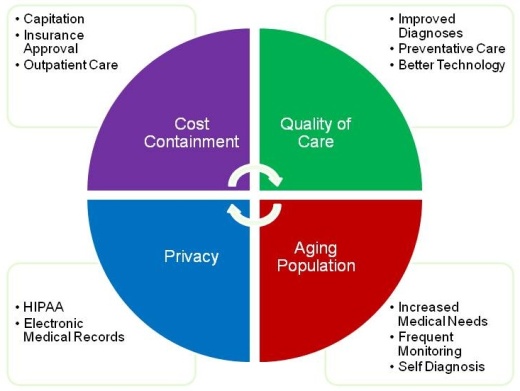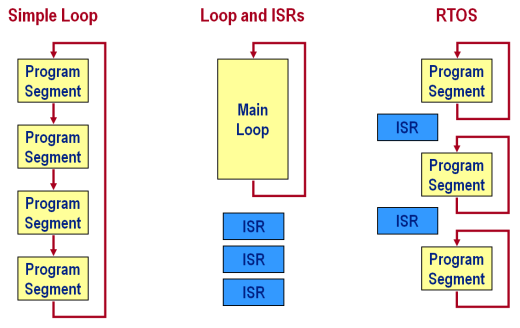Embedded articles – medical systems, C function parameters, multitasking and Forth
Although I regard the New Year as a time to look forward, I am continuing my catch-up process of cataloging embedded software articles that I have had published on embedded.com in the recent past. This time they cover medical systems, C function parameters, the basics of multitasking and the Forth language…
Electronics for the Sick
Electronics is used for numerous applications, but one, for which most of us feel grateful, is medical instrumentation. A modern hospital or doctor’s surgery is bristling with electronics. This article reviews the embedded software technology that drives such systems and looks at how this application area is driving many new developments as well as leveraging existing techniques and devices. At the same time, medical applications present new challenges to embedded software developers, which cannot be ignored.
Function Parameters
Passing parameters to a C function seems simple enough, the details of how that process takes place have a significant impact on the behavior and performance of the code. Programmers of desktop computers do not care about this impact; embedded developers do not have that luxury. This article looks at parameter passing mechanisms and how to use them optimally.
A multitasking kernel in one line of code – almost
In a world dominated real time operating systems with enormous arrays of functionality and full scale operating systems, like Linux, it can be useful to stand back and consider the basics. What if you just need some basic multi-threading? How complex does that need to be? In this article, some ideas are proposed for almost trivially simple multi-threading, which might even be implemented in a single line of code!
Go Forth!
The most commonly used programming language for embedded applications is C, with C++ gradually becoming more popular. C was never designed for embedded use, but a handful of languages were intended from day 1 to be used for this purpose. One of those languages is Forth. Although it may be argued that the language’s heyday was about 30 years ago, there are still a loyal band for Forth fanatics who keep the language alive. In this article, there is a very brief introduction to the language and we consider whether it might have a place in modern embedded systems.
Comments
Leave a Reply
You must be logged in to post a comment.


Colin, I think that Forth has a revival. Bloatware is an issue, as is IoT. In Iot you want to have very small code, and you want to be sure that the number of wholes for others to get in is minimized. As far as I know Forth is actually the only option if you want a fully certified compiler. And for people who are new to it, we have just done a project with the scouts, where they soldered their own “beating heart”, 450 Forth systems, now they can start programming – all software is actually on the chip, just talk to a terminal (or PC). Interactive is one important point here, Just google “Time of your Light”. Definitely not old or over – the features are required more and more. Software is built in small pieces and can be tested immediately It grows as you design, based on tested substructures. There are letters (assembly ) to write words ( actually called Words), words are combined to phrases, then chapters – and at some point the novel ( application) is ready. We know who uses it, as well sell the Forth Compilers from the UK – see http://www.mpeforth.com